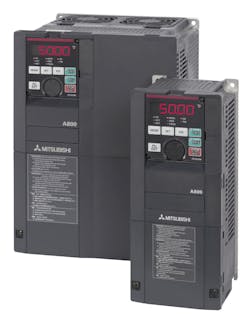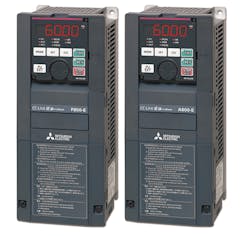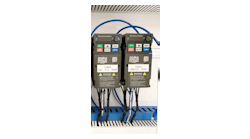Think about all the options now available with modern variable frequency drives (VFDs). An interesting trend growing in popularity is one that ignores these features. The very nature of VFDs is to allow for flexibility in terms of operational needs and energy efficiency. A process can be optimized using VFDs to maximize production while minimizing operation costs by adjusting the motor speed, acceleration and torque. In addition, VFDs are designed to make adjustments based on the conditions of the environment.
If the VFD involved in the process is showing signs of failure — for instance overheating, overvoltage, power surge etc., alarm signals are triggered in the VFD and the drive adjusts accordingly. It can also adjust its speed or shut off completely until the problem is fixed and the operation is returned to normal. Typically, these features are set for economic and, potentially, safety reasons. However, what if there was a way to utilize an option on a VFD that permitted it to run to failure regardless of the internal alarms? Oddly enough, this feature has become very important in some industries for the very same reason the alarms exist in the first place — for safety and economic purposes.
Economic considerations
The ability to run to failure seems counterintuitive at first. How can it possibly make any kind of economic sense for a VFD to continue running when alarms are going off? Shouldn’t it shut down? Won’t this cost the operator more in the long when the VFD ultimately fails and needs to be replaced?
The answer, inevitably, is "yes," but the devil is in the details. Perhaps this eventual failure and replacement will actually cost the operator less than the previously obvious alternative of replacing the unit. In some industries, the opportunity cost is just too great. One of the reasons why preventative maintenance and regularly scheduled downtime for repairs is so critical is the money lost when a process is shutdown unexpectedly.
As the old adage proclaims, "time is money." There are some industries where this is certainly more true than others. For example, if the process is in the semiconductor industry, the cost of shutting down a process to replace a certain piece of equipment is just not worth it. This is often dependent on when the alarms begin to sound during the process. It may make far more sense to run the process until failure and then address the issue.
To illustrate, let’s say a process is set to run for two hours. Then, with roughly 15 minutes or so to go, signals are sent to the VFD that there is a problem, triggering it to shut down. In a scenario like this, shutting the process down is likely doing more harm than good. Alternatively, the operator would rather keep that VFD running at the appropriate speed until the process is over, as opposed to running it in suboptimal conditions for the final 15 minutes. After the process is complete, the VFD can be turned off and the errors can be addressed.
In the above-mentioned scenario, operators would much rather be able to set a parameter in the VFD that it should not stop due to any type of signal or alarm. With this approach, they can be confident that their process will run uninterrupted until completion.
Safety considerations
With an understanding of the economic implications of VFDs running until failure, it is also important to be aware of the safety implications of such a feature. This has most everything to do with the environment the VFD is being utilized within. Perhaps the nature of the VFD is that it is meant to be used in the case of an emergency. For example, it could be connected to a fan. In case of a fire, or some kind of spillage, the VFD may need to run until it absolutely cannot run anymore. Some of these fans are designed to ventilate the air in toxic areas. This is a clear example of when running the VFD until failure is exactly what the operator wants for safety purposes.
The most advantageous part of the VFD feature that allows it to run until failure is that it can easily be turned on and off when the situation calls for it. As mentioned above, the nature of VFDs is that they are built to adjust to specific situations — this feature is just another way of taking that flexibility to the next level.
VFDs come with many parameters that can be fully customized either manually or by plugging it into a device. The key is to know whether or not the feature is present. Not all VFDs have the feature to run until failure, so it is important to know if the VFD being considered does and to take advantage of it accordingly.
VFDs did not always have the ability to run until failure even if it made sense either economically or for safety reasons. They were designed to protect themselves and the equipment around them. While this is still a beneficial feature, this unique feature to run to failure is helping operators meet their goals in way that was not always available.
Kair Turubayev is an application engineer at Valin Corporation, a leading technical solutions provider for the technology, energy, life sciences, natural resources and transportation industries. Valin offers personalized order management, on-site field support, comprehensive training and applied expert engineering services utilizing automation, fluid management, precision measurement, process heating and filtration products. For more information, please visit www.valin.com.



